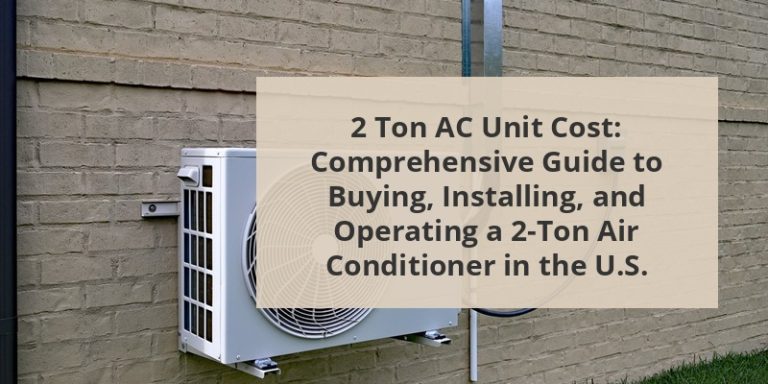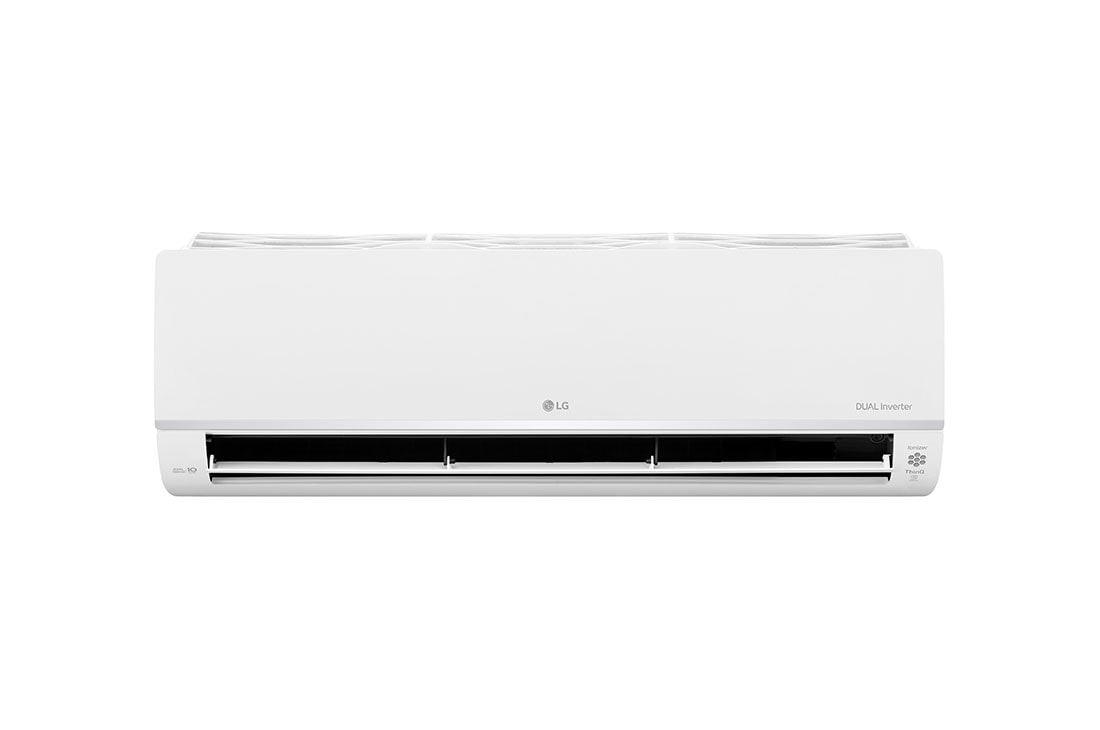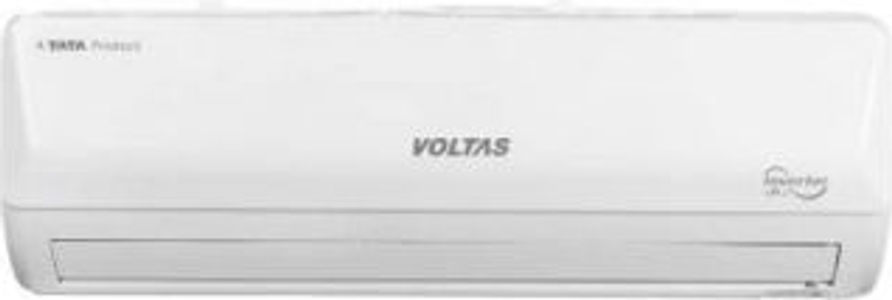Cost Of A 2 Ton Air Conditioner

Understanding the Cost of a 2 Ton Air Conditioner: A Comprehensive Guide for Energy-Conscious Consumers
For homeowners and business owners alike, the cost of cooling is a significant factor in overall energy expenses. A 2 ton air conditioner is a common size for smaller homes and commercial spaces, striking a balance between cooling power and energy efficiency. This article provides a detailed breakdown of the costs associated with a 2 ton AC unit, exploring factors that influence pricing, potential energy savings, and available incentives to help you make an informed decision.
Initial Costs: Purchase Price and Installation
The upfront cost of a 2 ton air conditioner generally ranges from $3,000 to $7,000, including both the unit itself and professional installation. This range is broad because it depends on several key variables:
- Type of System: A traditional split system (outdoor condenser and indoor air handler) will have a different price point than a ductless mini-split system or a packaged unit. Mini-splits, while offering zone cooling advantages, often have a higher initial cost.
- SEER Rating (Seasonal Energy Efficiency Ratio): This rating measures the cooling efficiency of the unit. Higher SEER ratings (16 or greater) translate to greater energy savings over time but come with a higher initial price tag. Energy Star certified units typically have SEER ratings of 14.5 or higher for split systems and 14 or higher for single-package systems.
- Brand Reputation: Established brands like Carrier, Trane, Lennox, and Rheem often command a premium due to their reputation for reliability and performance. However, lesser-known brands may offer competitive pricing with similar features.
- Installation Complexity: Existing ductwork can significantly reduce installation costs. If new ductwork is required or the unit needs to be placed in a difficult-to-access location, installation costs will increase.
- Contractor Pricing: Labor rates vary depending on your location and the contractor you choose. It's always recommended to get multiple quotes to ensure you're getting a fair price.
When budgeting for your new AC unit, remember to factor in the cost of permits required by your local municipality. These permits ensure that the installation meets safety and building codes.
Operational Costs: Understanding Energy Consumption
The operational cost of a 2 ton air conditioner is directly related to its energy consumption. To estimate this, consider the following:
- Wattage: A 2 ton AC unit typically consumes between 1,500 and 2,500 watts while running. This varies depending on the SEER rating and the load it's under.
- Usage Hours: The number of hours the AC runs per day and per month will significantly impact energy consumption.
- Electricity Rate: Your local electricity rate, measured in cents per kilowatt-hour (kWh), is crucial for calculating running costs.
Here's a simplified calculation to illustrate:
Assume a 2 ton AC unit consumes 2,000 watts (2 kW) and runs for 6 hours per day. Your electricity rate is $0.15 per kWh.
Daily Energy Consumption: 2 kW * 6 hours = 12 kWh
Daily Cost: 12 kWh * $0.15/kWh = $1.80
Monthly Cost: $1.80/day * 30 days = $54
This is just an estimate, and actual costs may vary depending on the factors mentioned above. A higher SEER rating will reduce wattage consumption and lower your monthly bill.
The Benefits of High-Efficiency Air Conditioners and Energy Star Certification
Investing in a high-efficiency 2 ton air conditioner with a high SEER rating pays off in the long run. While the initial cost might be higher, the reduced energy consumption translates to significant savings over the lifespan of the unit. Energy Star certified units are independently tested and verified to meet strict energy efficiency guidelines, ensuring optimal performance.
Consider this example:
A standard 2 ton AC unit with a SEER rating of 13 is compared to a high-efficiency unit with a SEER rating of 18.
The higher SEER unit could potentially save you 15-30% on your cooling costs annually. Over a 10-15 year lifespan, these savings can easily offset the initial price difference.
Rebates, Tax Credits, and Incentives
Many utility companies, state governments, and federal programs offer rebates and tax credits to encourage the purchase of energy-efficient HVAC systems. These incentives can significantly reduce the overall cost of a new 2 ton air conditioner. Be sure to check the Energy Star website and your local utility provider for available programs.
The Inflation Reduction Act (IRA) includes provisions for tax credits for homeowners who install energy-efficient HVAC systems. These credits can provide substantial savings, making high-efficiency upgrades even more attractive. Consult with a tax professional to determine your eligibility and the specific amount of the credit you can claim.
Smart HVAC Integration: Maximizing Efficiency and Comfort
Integrating your 2 ton air conditioner with smart home technology can further enhance energy efficiency and comfort. Smart thermostats, sensors, and control systems allow you to:
- Program Customized Schedules: Set different temperature settings for different times of the day, optimizing energy use based on your occupancy patterns.
- Remote Control: Adjust the temperature from your smartphone or tablet, even when you're away from home.
- Zone Control: Use zone dampers (in ducted systems) or individual mini-split units to control the temperature in different areas of your home, avoiding unnecessary cooling in unoccupied rooms.
- Monitor Energy Consumption: Track your AC unit's energy usage in real-time, identifying areas where you can further optimize performance.
- Receive Maintenance Alerts: Get notified when it's time to change filters or schedule maintenance, ensuring optimal performance and extending the lifespan of your unit.
Smart thermostats, like those from Nest, Ecobee, and Honeywell, can learn your habits and automatically adjust the temperature to maximize energy savings. They can also integrate with other smart home devices, such as lighting and security systems, creating a seamless and energy-efficient ecosystem.
Ductless Mini-Split Systems: A Cost-Effective Alternative?
Ductless mini-split systems are an increasingly popular alternative to traditional central air conditioning, particularly for homes without existing ductwork or for targeted zone cooling. While the initial cost can be higher than a comparable central AC unit, mini-splits offer several advantages:
- Higher Efficiency: Mini-splits often have higher SEER ratings than traditional systems, leading to greater energy savings.
- Zone Cooling: Each indoor unit can be controlled independently, allowing you to cool only the rooms you're using.
- Easy Installation: Installation is typically less disruptive and less expensive than installing ductwork.
A 2 ton mini-split system can effectively cool a single large room or several smaller rooms. The cost of a 2 ton mini-split system typically ranges from $3,500 to $8,000, including installation.
Maintenance and Longevity: Protecting Your Investment
Proper maintenance is essential for ensuring the longevity and optimal performance of your 2 ton air conditioner. Regular maintenance tasks include:
- Changing Air Filters: Dirty air filters restrict airflow, forcing the AC unit to work harder and consume more energy. Replace filters every 1-3 months, depending on usage and air quality.
- Cleaning the Condenser Coils: Dirty condenser coils reduce the unit's ability to dissipate heat, decreasing efficiency. Clean the coils at least once a year.
- Checking Refrigerant Levels: Low refrigerant levels can indicate a leak, reducing cooling performance. Have a qualified technician check and recharge the refrigerant as needed.
- Inspecting Ductwork (for ducted systems): Ensure that ductwork is properly sealed and insulated to prevent air leaks.
- Professional Tune-Ups: Schedule annual tune-ups with a qualified HVAC technician to inspect and clean all components, ensuring optimal performance and identifying potential problems early on.
A well-maintained 2 ton air conditioner can last for 15-20 years. Neglecting maintenance can significantly shorten its lifespan and increase energy costs.
Choosing the Right Contractor: Expertise and Experience Matter
Selecting a qualified and experienced HVAC contractor is crucial for ensuring a proper installation and maximizing the lifespan of your 2 ton air conditioner. Look for contractors who are licensed, insured, and have a proven track record of providing quality service. Get multiple quotes and ask for references to ensure you're making an informed decision.
Consider these factors when choosing a contractor:
- Certifications: Look for contractors who are certified by organizations such as NATE (North American Technician Excellence).
- Experience: Choose a contractor with experience installing and servicing the type of AC unit you're considering.
- Warranty: Ensure that the contractor offers a warranty on their workmanship.
- Customer Reviews: Check online reviews and ask for references to get an idea of the contractor's reputation.
Conclusion: Making an Informed Decision for Energy Savings
The cost of a 2 ton air conditioner is a multifaceted issue, encompassing purchase price, installation costs, operational expenses, and potential savings. By understanding the factors that influence these costs and taking advantage of available rebates and incentives, you can make an informed decision that maximizes energy efficiency and reduces your overall cooling expenses. Investing in a high-efficiency unit, integrating smart home technology, and maintaining your system properly will ensure long-term savings and a comfortable indoor environment. Ultimately, a 2 ton AC unit is a cost-effective way to keep cool while keeping the planet in mind.










